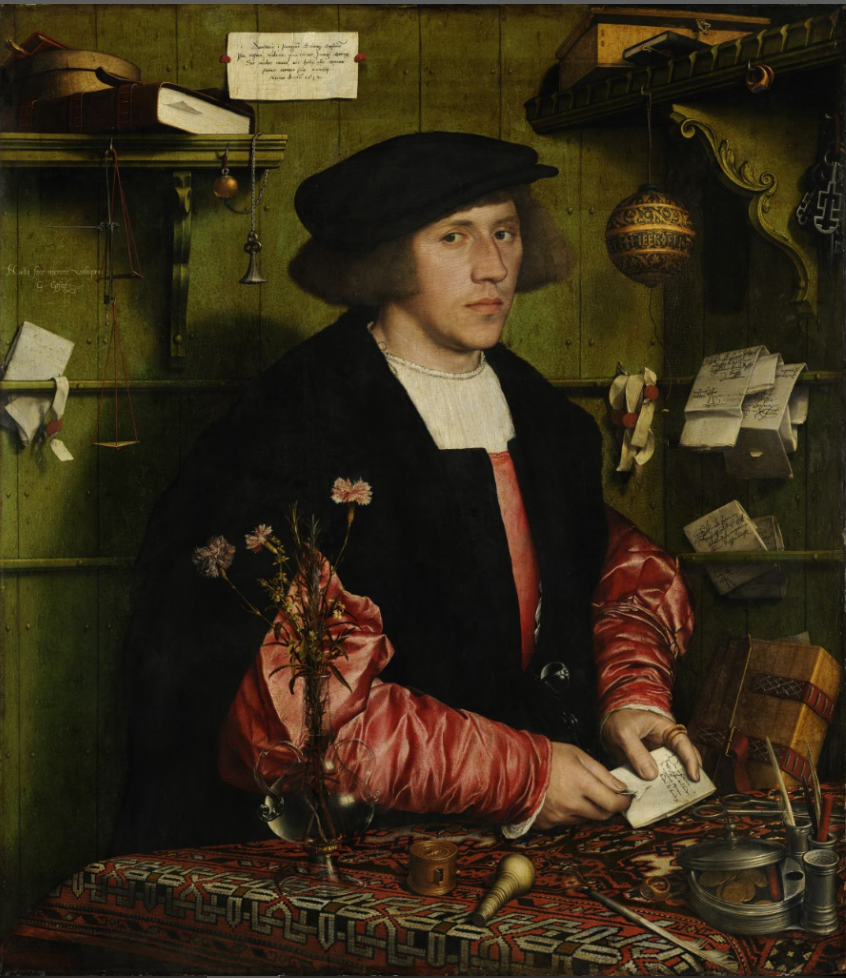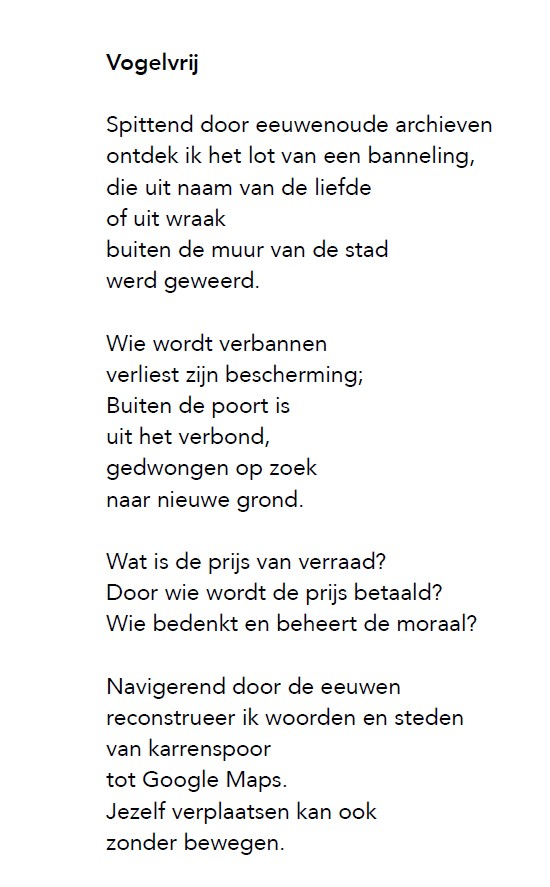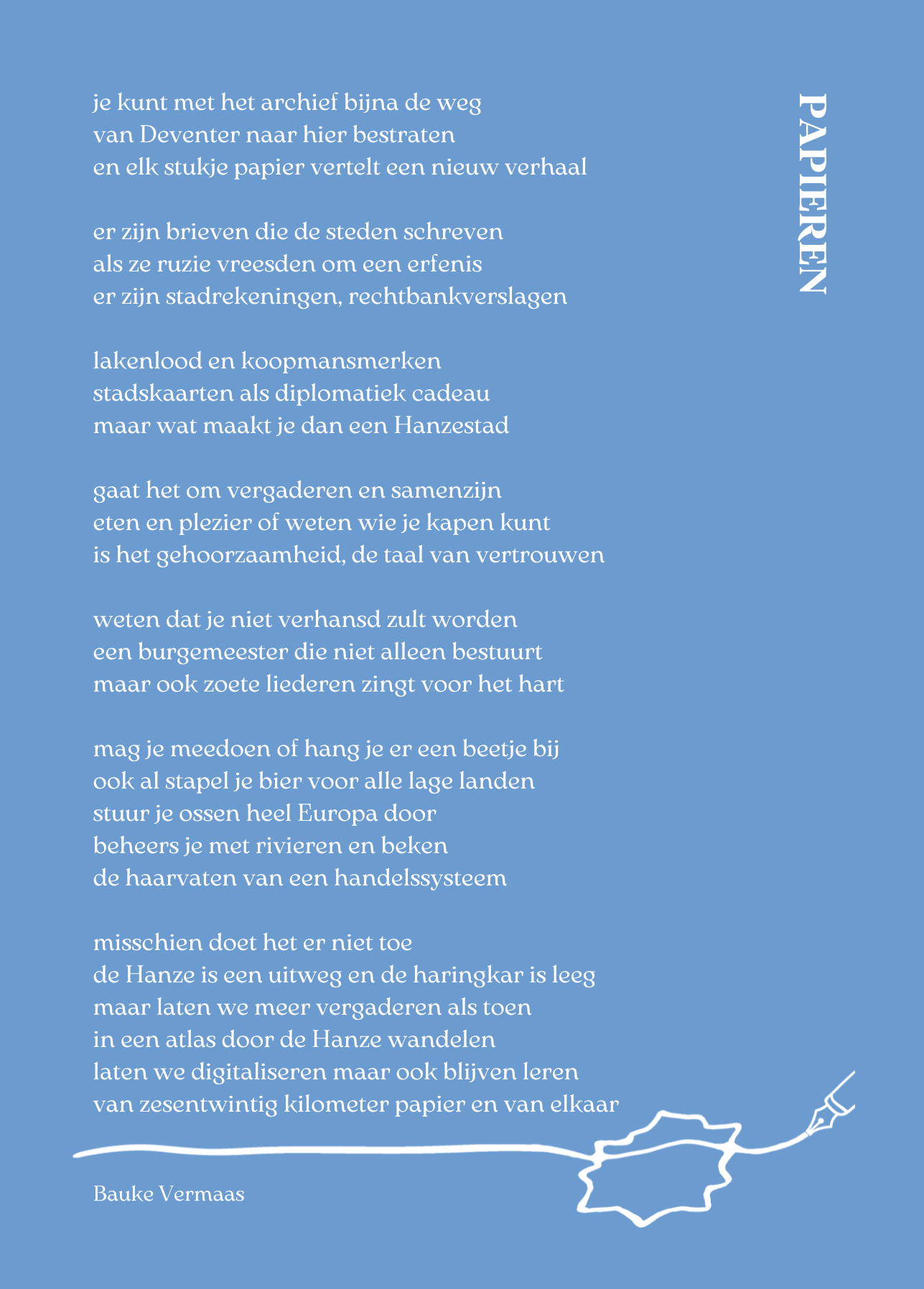Georg Giese leitmotif
Justyna Wubs-MrozewiczWhat's behind the picture of a conflict manager?

Georg Giese by Hans Holbein, the leitmotif of our website. The painting of the Danziger merchant staying in the Hanseatic Kontor in London is full of symbolism: writing attributes, merchant books, lavish rugs and imported textiles, scales and weights all speak of the profession and standing of the depicted Georg. Yet there is more: letters, merchant marks and carnations as a symbol of the pending wedding with the daughter of a councillor point to extensive networks through family and institutions. Georg and members of these networks were more than just merchants: they were councillors, judges, burgomasters, secretaries of kings, bishops and envoys. In these capacities, they continuously managed conflicts, small- and large-scale. They balanced interests, and this balance proved at times difficult or even impossible, as Hans Holbein hinted in his painting.
'Something is wrong here. The angle of the room is not correct, the corner of the table protrudes toward the viewer in a rather weird way, and both his seal dangling at the back and lopsided scales next to it are tilted in a way that is physically impossible. They hang next to Giese’s motto: ‘No joy without sorrow’. The off-balance presentation of elements of mercantile life is not a token of a lack of skill of Holbein: quite the contrary, he did it on purpose and his visual tricks are also known from another famous painting. The huge ‘The Ambassadors’ in the National Gallery of London, where a French ambassador and a bishop are depicted with an anamorphic skull at the bottom, is a reminder of the finality of life.In the case of the Giese portrait, these irregularities draw the viewer to the painting, stir an interest and impart a feeling of movement and possible lack of balance under the veneered, still image. I would add that this search for balance, so central in medieval thought, and the realization that it was a result of constant movement and change and was therefore fragile, was very fitting to the mindscape of merchants at the time. They were involved in several balancing acts between various levels of activities, various networks to which they belonged, and the various roles they performed. Not least of which in their capacity as conflict managers.'
Justyna Wubs-Mrozewicz, “Maritime Networks and Premodern Conflict Management on Multiple Levels: The Example of Danzig and the Giese Family,” in Maritime Networks as a Factor in European Integration. Fondazione Istituto Internazionale Di Storia Economica “F. Datini” Prato (University of Firenze, 2019), 385–405.


